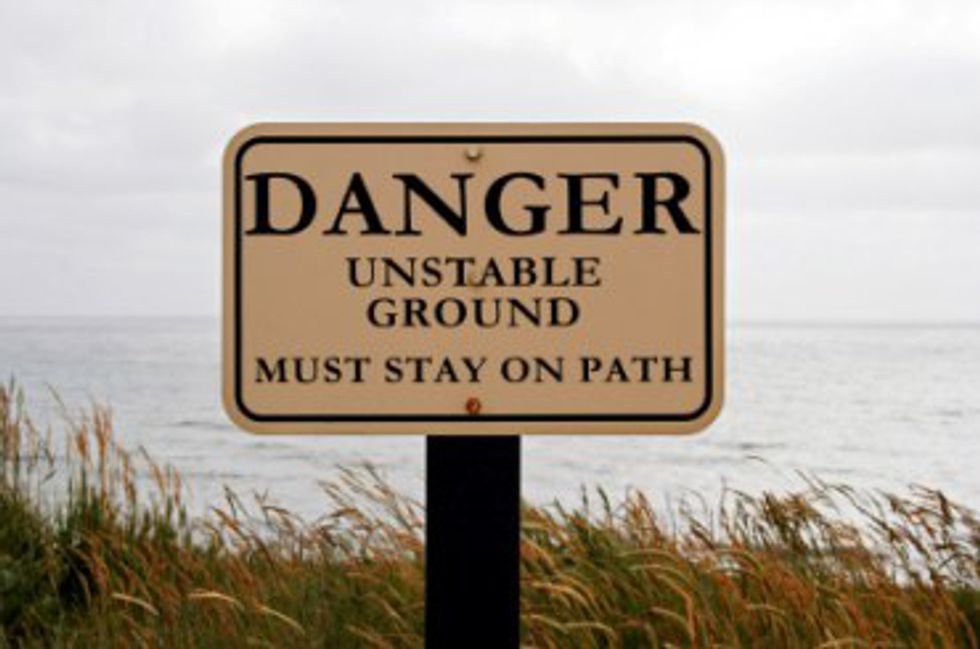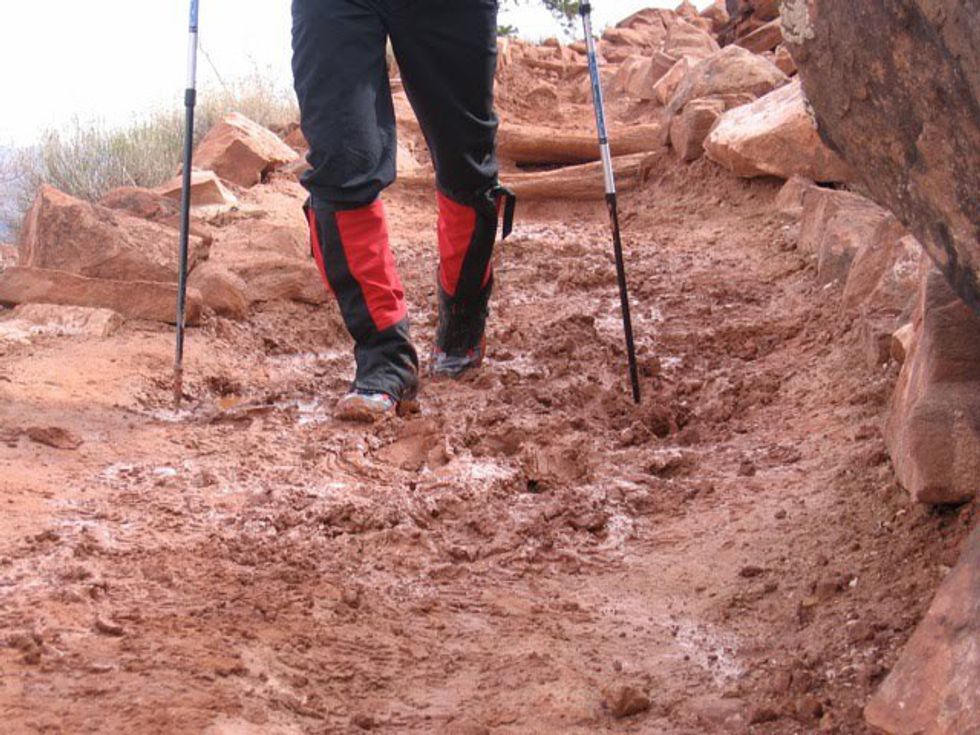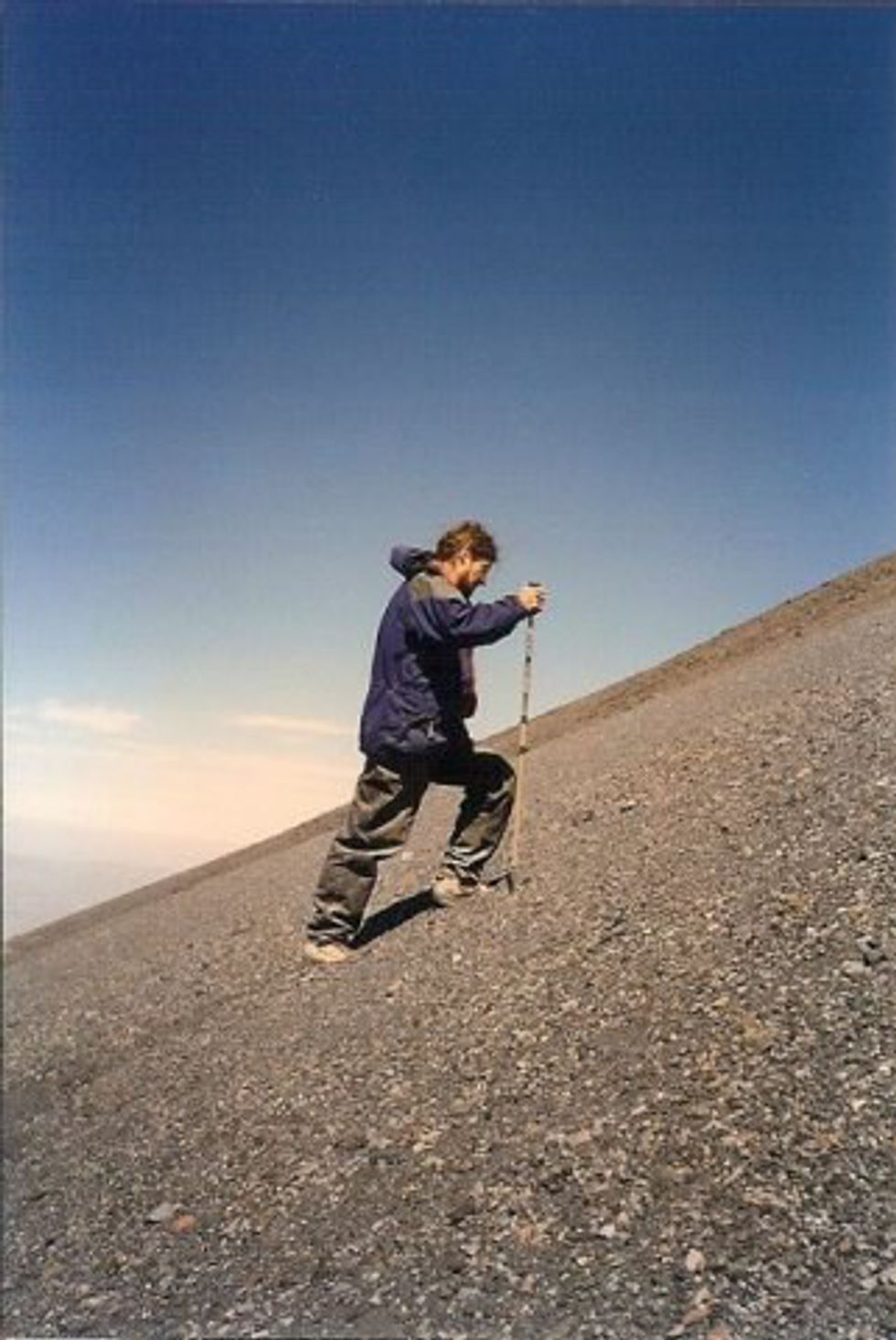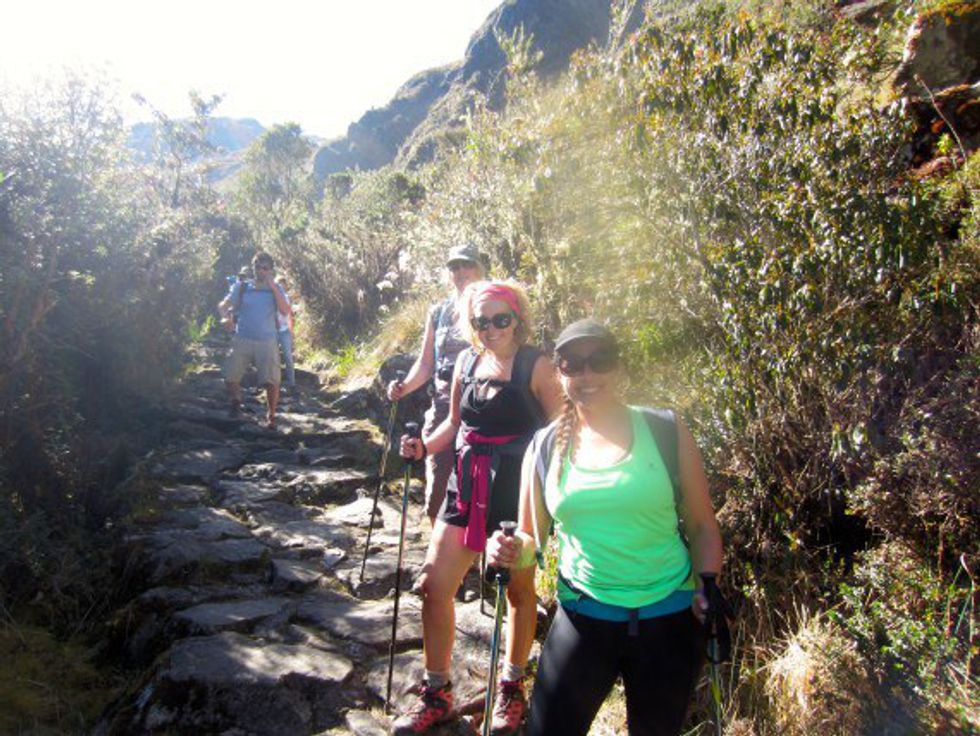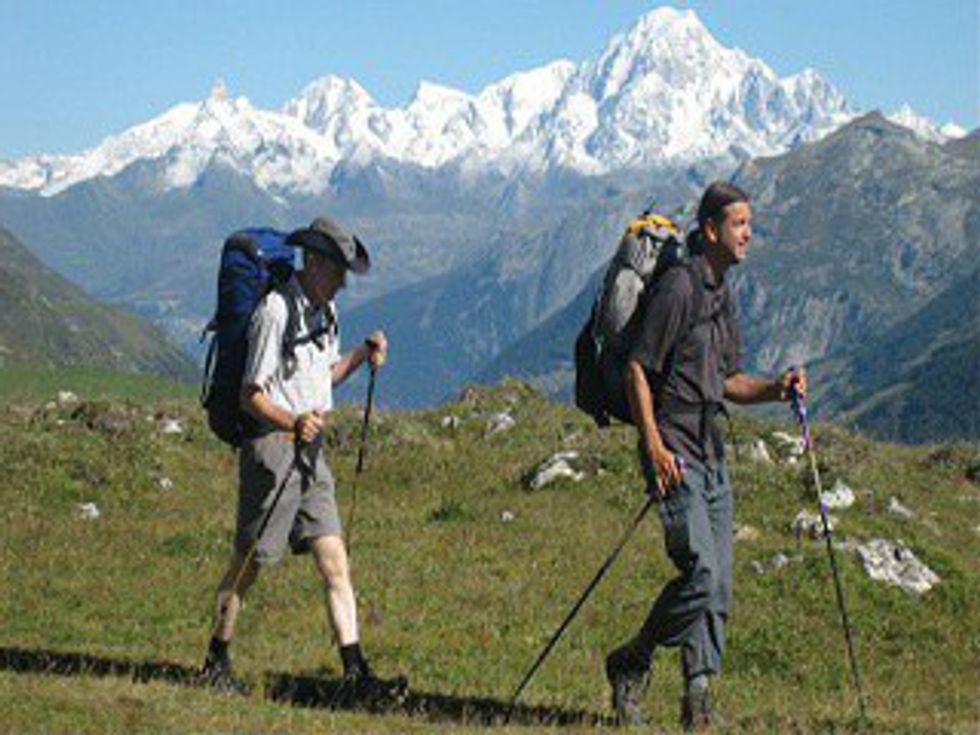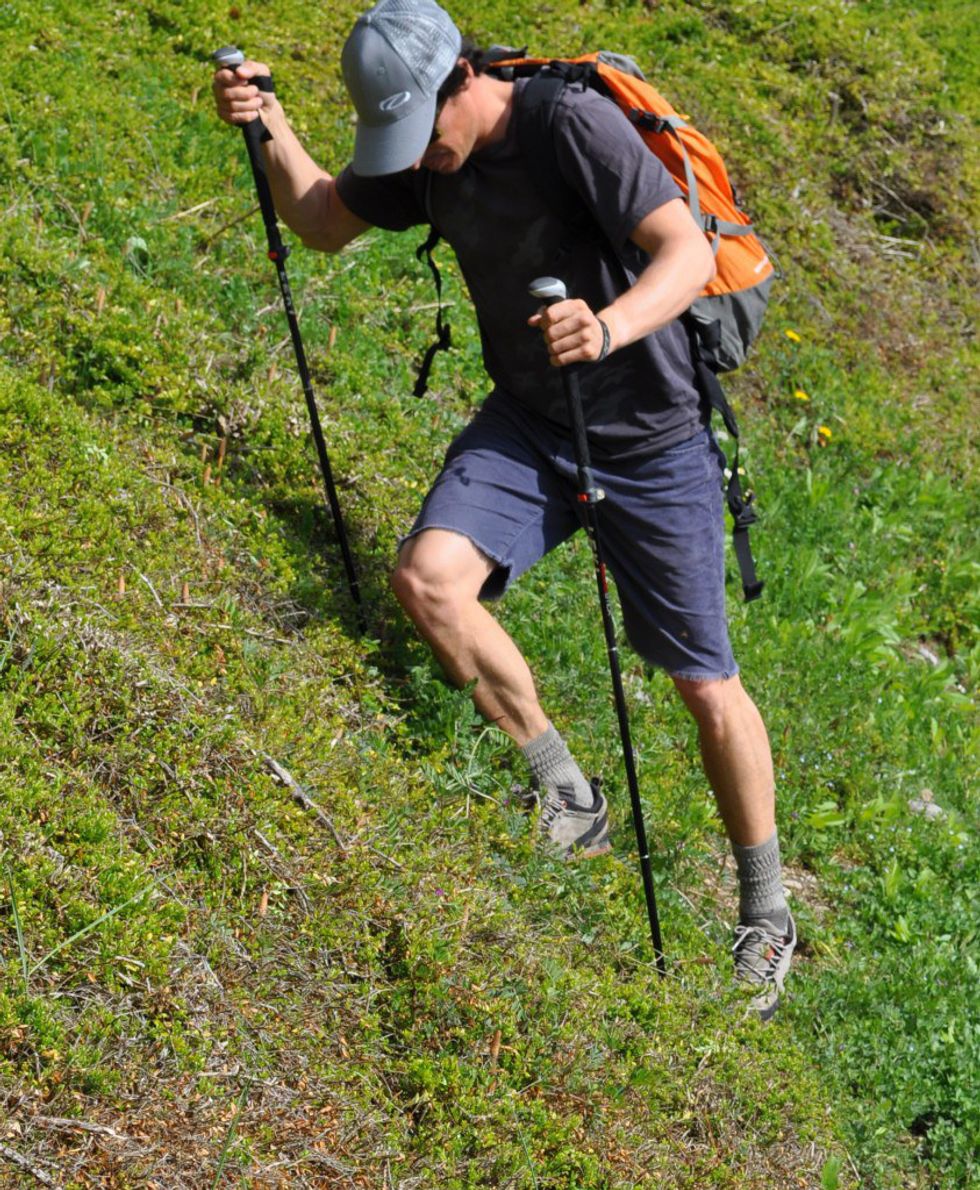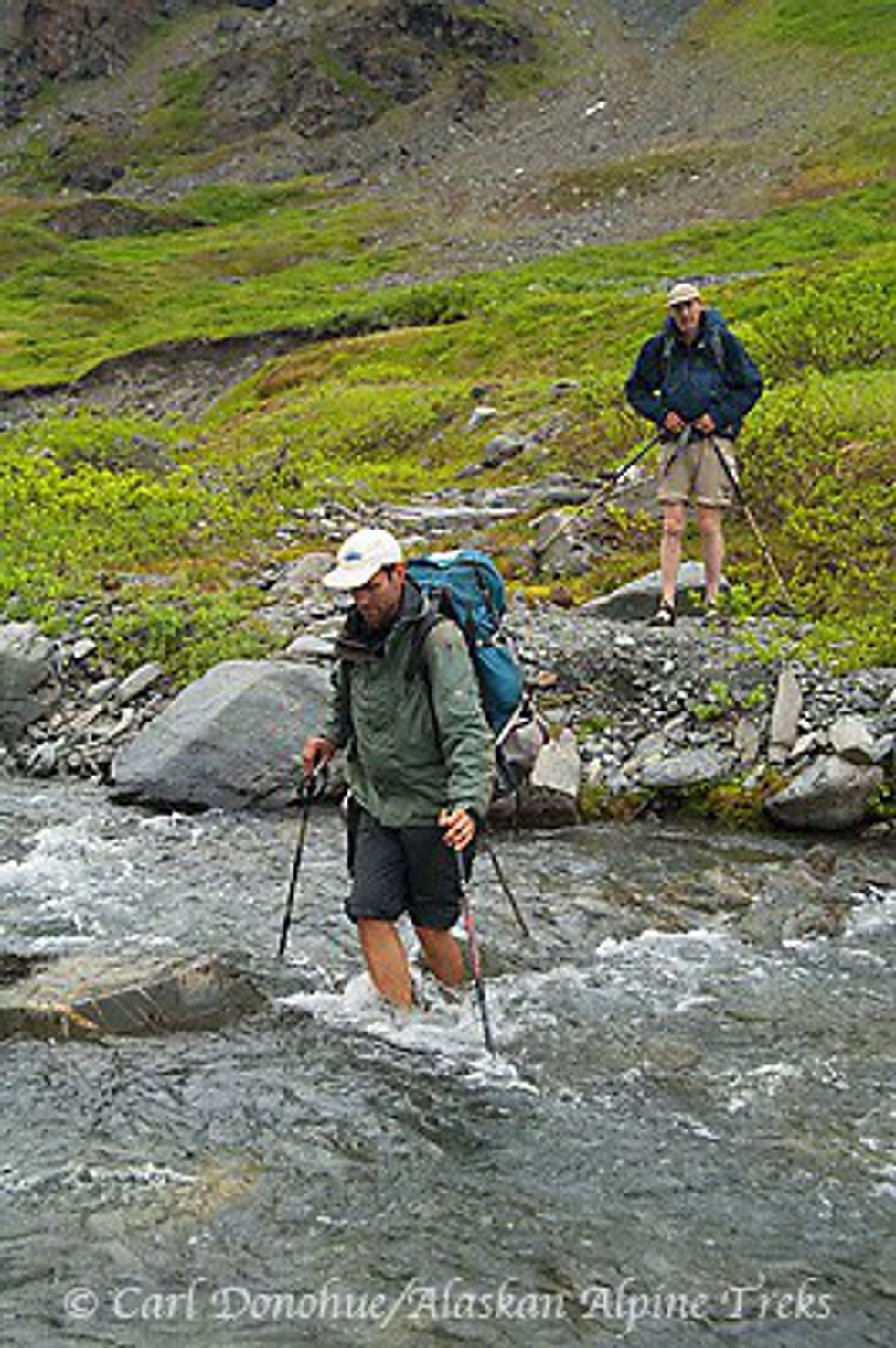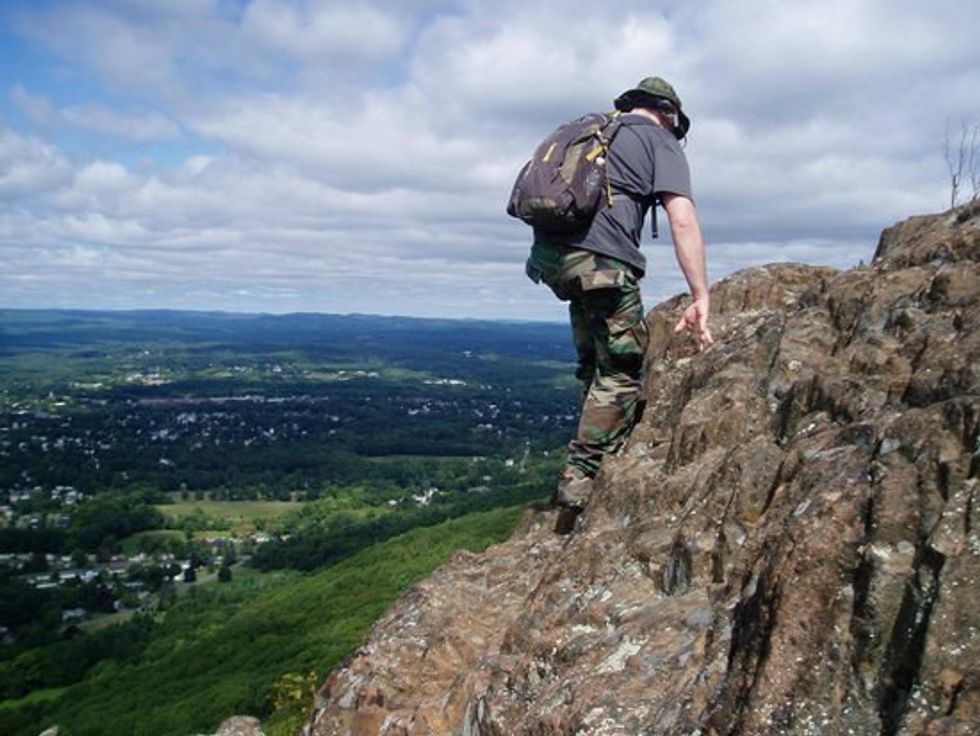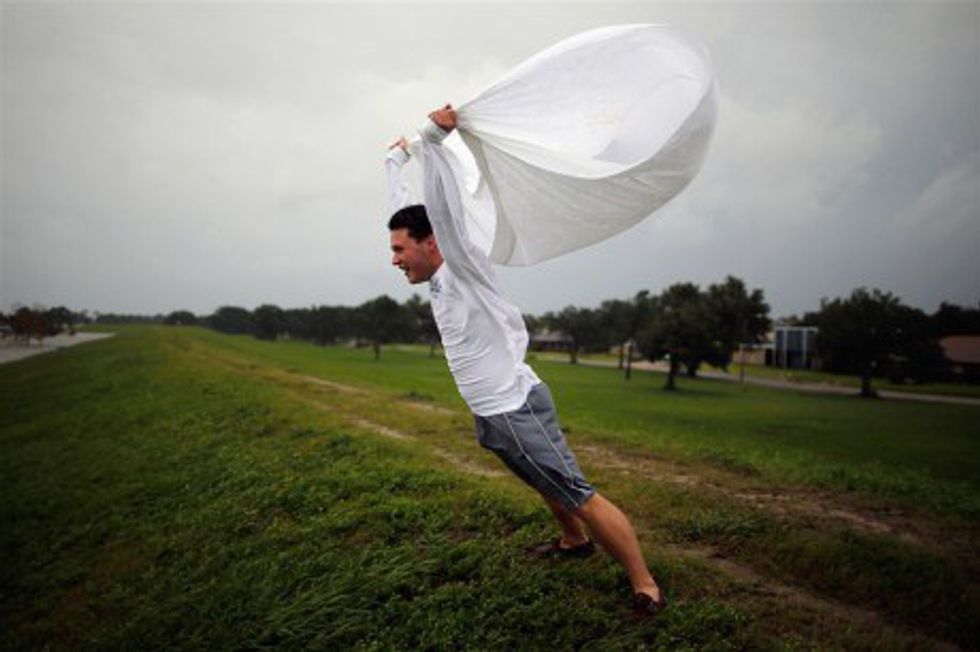I never used trekking poles growing up. I had always seen them as something that only old people with bad knees and tourists used. But recently, that has all changed.
Last October, I decided I was going to thru-hike the Pacific Crest Trail (PCT). For those of you who don't know, the PCT is a 2,650 mile trail that runs from the Mexico-California Border up into Manning Park, British Columbia in Canada. Thru-hiking means that I am attempting to hike all 2,650 miles of the trail in one season. As I did research for my adventure, I saw that most thru-hikers (no matter their age) used trekking poles. I decided to use them and am so incredibly glad that I did. I am about 150 miles into the trail thus far and these are just a couple of the ways that trekking poles have (sometimes literally) saved my life.
1. Unstable Ground
Obviously, if there is a "DANGER Unstable Ground, Must Stay On Path" sign, you should stay on the path. Leaving it is a danger to yourself and a huge violation of the Leave No Trace Principles that every savvy outdoors explorer should follow.
But unstable ground isn't always marked and isn't always on forbidden ground. Around mile 15 on the PCT, there is a huge descent into Hauser Creek. This is in a desert and the ground is very dry and crumbly. I took a step on the trail where it looked like I would have solid footing, and it gave out. If I hadn't had my trekking poles, I would have fallen off the trail. Thankfully this particular drop was only about five feet and wouldn't have ended my life, but it certainly would have broken my ankle if not my leg and ended my hike less than a day into it. This the first time I was extremely grateful for my trekking poles.
2. Mud
Mud is another icky one. As tempting as it is to wander off the path to walk on rocks and ground that is less, well, muddy, it is important to stay on the trail to protect the environment around you, trekking poles are great for these situations. They can help you keep your footing and prevent you from sliding around with your steps. This applies to walking on uphills, downhills, level ground or traversing. On my second day, walking from Lake Morena (Mile 20) to Mt. Laguna (Mile 42), it was pouring rain. Everything was slick and most of the day was uphill. My trekking poles definitely prevented me from losing my hard-earned elevation gain more than once.
3. Uphill
Uphill is what most people think of using trekking poles for. They're great because they transfer weight from your legs to your arms. This means that your legs become tired less quickly and your joints get less of a beating. Whether or not you have bad knees or ankles, this can do a world of good in preventing injury and promoting good health. Also, since your arms are doing some of the work now, your hike becomes more of a full body work out instead of just lower body and core so your arms can get buff too!
4. Downhill
Non-trekking pole users don't typically think of downhill when they think of trekking poles, but in my opinion, they are even more important for health and safety here. Using trekking poles while doing downhill can help you control your pace and balance on steep inclines. It also helps you to put less stress and and impact on your knees while going downhill. Seriously, your knees take a beating on downhills. I have been thankful for my poles on every foot of downhill this hike.
5. Level Ground
Trekking poles are less popular for level ground, but still very useful. They help you keep a steady pace, and again, transfer some weight away from your knees. They won't necessarily save your life on level ground, but they can certainly save your pace and your knees.
6) Traversing
Traversing is when you are walking parallel to a slope. As anyone who has ever done this before, this is uncomfortable at best and nigh impossible at worst. Trekking poles can be an enormous aid in these situations. One leg is still going to do the brunt of the work, but trekking poles can help you balance and make a long traverse much less tiring for your poor little legs. Also, they help your knees. (You will notes I have mentioned knees a lot. Trekking poles are really one of the best things you can do for your knees. Get them.)
7. Crossing Rivers and streams
River and stream fords are pretty common for backcountry explorers. Sometimes they are pretty tame - a couple inches of water deep, a foot or so wide, moving slowly. Sometimes they can be really dangerous. Unknown depth, wide, fast moving water. The first 700 miles of the PCT is desert so I haven't had any of the huge dangerous crossings yet, but I have heard the stories. I have also had several smaller crossings. And more than once, I have taken a step on a rock, slipped, and my trekking pole prevented me from eating it. While that isn't life or death, it certainly prevented a painful, wet, and cold outcome. On the larger crossings, trekking poles can prevent you from being pulled underwater and drowning or swept away by the current by helping stabilize your footing and aiding you in gauging the depth of the water.
8. Cliffs
Cliffs can be dangerous for hikers. The PCT is both an equestrian and hiking trail, but there are portions where I have certainly been amazed that anyone would bring their horses on the trail. Walking on a trail less then a foot wide with a 30-40 pound pack on your back on the edge of a several hundred (if not thousand) foot drop off is pretty terrifying. An adrenaline rush, yes, but also a reminder that every step could be your last and of the immanent mortality of life. Trekking poles can act as a source of comfort knowing that you have a little more support and that if one step is a little off, you still can save yourself from your impending doom.
9. Wind
This kinda goes along with cliffs. There is one moment that particularly sticks in my mind for this one. Somewhere around mile 53 on the PCT, there are some of those cliffs I mentioned. The ones with the really thin trail and the steep drop off. I was hiking past this on Mother's Day and it was extremely, extremely windy. My guess is that the winds were about 20 mph, blowing away from the cliff face and into the void. I am short and very top heavy with my pack on, especially when it has several days of food and water as it did at this point. I was legitimately afraid of being blown over to my death. I used my trekking poles at about a 30 degree angle to brace myself against the wind. With every step I thought, "I can't die. This would be the worst Mother's Day present ever." With every step I braced myself for what could come. I obviously made it through, but this will forever stand out to me as one time where my trekking poles literally saved my life.
Ultimately, most of these reasons come down to helping you in balancing, having good footing, and saving your joints. But trekking poles are useful for all terrains and all situations and I would seriously recommend that anyone who isn't already using them start. I use Black Diamond Alpine Carbon Cork trekking poles because they are lightweight, strong and comfortable for me, but different poles work for different people. REI has a great article on how to choose trekking poles and hiking staffs if you don't know where to start. Trekking poles are great to use, and you never know. They just may save your life.


